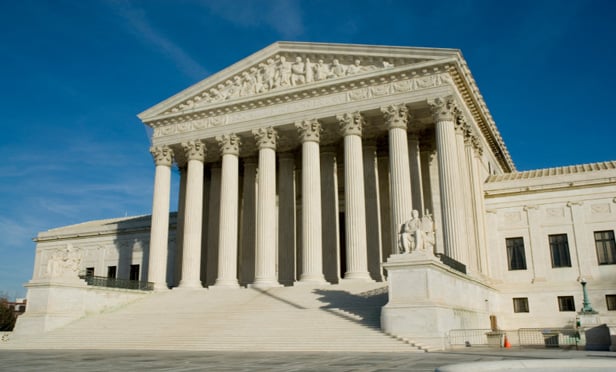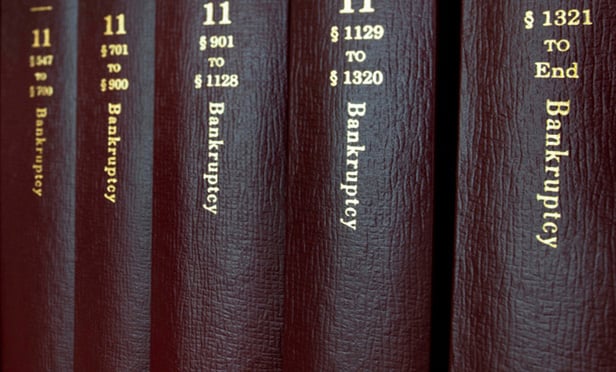Features

SCOTUS Looks for Remedy to Its Bankruptcy Fee Congressional Overstep Ruling
The U.S. Supreme Court on January 9 debated the proper remedy for its 2022 ruling that Congress violated the Constitution when it imposed steep bankruptcy fee hikes on large debtors in some districts but not others.
Columns & Departments

Fresh Filings
Notable court filings in entertainment law.
Features

RLUIPA Claim Is Ripe for Judicial Review When Zoning Board Failed to Hear Appeal
In a reversal of the District Court, the Second Circuit Court of Appeals found that the failure of a local Zoning Board of Appeals to hold a hearing on an appeal from the determination of the building inspector, constituted a final determination that was ripe for judicial review.
Columns & Departments

Real Property Law
Forgery Claim Not Barred By Statute of Limitations, Laches, or Equitable Estoppel Recorded Easement Was Abandoned No Easement By Implication Where Parcel Had Water Access from a Different Lot
Columns & Departments

Landlord & Tenant Law
Settlement Agreement Did Not Terminate Guarantor's Obligation Tenant Failed to Raise Question of Fact About Whether Building Contained Six or More Units and Was Therefore Subject to Rent Stabilization Landlord Not Entitled to Future Rent from Tenant While Also Enjoying Possession Guarantor Not Liable for Use and Occupancy
Columns & Departments

Co-ops and Condominiums
Tortious Interference Claim Dismissed
Columns & Departments

Development
City Had Authority Over Tree Removal on Privately Owned Streets
Features

Creative Expression vs. the Lanham Act: Six Months of Cases After Jack Daniel's
Last Term, the U.S. Supreme Court decided Jack Daniel's v. VIP Products — a case involving interaction between the Lanham Act and the First Amendment. This article traces the lower courts' reactions and applications to that decision.
Features

Three Things Trustees Should Know About Due Diligence in Preference Litigation
Courts have struggled with the interpretation of the 2019 amendment to Section 547, specifically whether the due diligence requirement is an element of a preference claim that must be adequately pleaded in the plaintiff's complaint. While the law is still developing, there are three important takeaways for trustees to consider.
Features

Keeping Track of Developments in Cases That Pit Creative Content Against AI Programs
2024 starts off with court decisions and procedural rulings that took shape in 2023 in lawsuits that were filed over the collision of creative content with generative AI programs. Most of the complaints allege copyright infringement and related claims prompted by the unlicensed copyright works that AI companies input into their AI programs.
Need Help?
- Prefer an IP authenticated environment? Request a transition or call 800-756-8993.
- Need other assistance? email Customer Service or call 1-877-256-2472.
MOST POPULAR STORIES
- The 'Sophisticated Insured' DefenseA majority of courts consider the <i>contra proferentem</i> doctrine to be a pillar of insurance law. The doctrine requires ambiguous terms in an insurance policy to be construed against the insurer and in favor of coverage for the insured. A prominent rationale behind the doctrine is that insurance policies are usually standard-form contracts drafted entirely by insurers.Read More ›
- A Lawyer's System for Active ReadingActive reading comprises many daily tasks lawyers engage in, including highlighting, annotating, note taking, comparing and searching texts. It demands more than flipping or turning pages.Read More ›
- The Brave New World of Cybersecurity Due Diligence in Mergers and Acquisitions: Pitfalls and OpportunitiesLike poorly-behaved school children, new technologies and intellectual property (IP) are increasingly disrupting the M&A establishment. Cybersecurity has become the latest disruptive newcomer to the M&A party.Read More ›
- Abandoned and Unused Cables: A Hidden Liability Under the 2002 National Electric CodeIn an effort to minimize the release of toxic gasses from cables in the event of fire, the 2002 version of the National Electric Code ("NEC"), promulgated by the National Fire Protection Association, sets forth new guidelines requiring that abandoned cables must be removed from buildings unless they are located in metal raceways or tagged "For Future Use." While the NEC is not, in itself, binding law, most jurisdictions in the United States adopt the NEC by reference in their state or local building and fire codes. Thus, noncompliance with the recent NEC guidelines will likely mean that a building is in violation of a building or fire code. If so, the building owner may also be in breach of agreements with tenants and lenders and may be jeopardizing its fire insurance coverage. Even in jurisdictions where the 2002 NEC has not been adopted, it may be argued that the guidelines represent the standard of reasonable care and could result in tort liability for the landlord if toxic gasses from abandoned cables are emitted in a fire. With these potential liabilities in mind, this article discusses: 1) how to address the abandoned wires and cables currently located within the risers, ceilings and other areas of properties, and 2) additional considerations in the placement and removal of telecommunications cables going forward.Read More ›
- Guidance on Distributions As 'Disbursements' and U.S. Trustee FeesIn a recent case from the Bankruptcy Court for the District of Delaware, In re Paragon Offshore PLC, the bankruptcy court provided guidance on whether a post-plan effective date litigation trust's distributions constituted disbursements subject to the U.S. Trustee fee "tax."Read More ›
